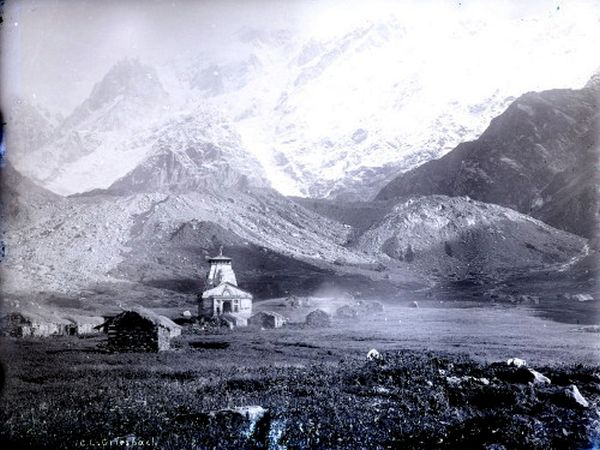Date: July 10, 2025
Part 6: Understanding Hindu Rituals – Teerth Yatra
Continued from Part 6
Teerth Yatra or Pilgrimage has been a part of the religious life of almost all the religions. The physical journey in the outer dimension is actually a symbol of an inner spiritual quest. In olden days, a pilgrimage always implied walking for months, and transport, wherever available, was only limited to horse drawn carriages or bullock carts, and meant only for the old and the infirm. The strong and the agile in body were always expected to walk.
In India the great pilgrimage sites were usually located in the high mountains like Kedarnath, Badrinath or in difficult-to-reach places like Kamakhya or Tirumala. Even in places like Kashi, Puri or Rameswaram – it involved weeks and months of travel by foot and resting on roadside inns during the long journey. During such long journeys, braving the inclemency of the weather and the arduousness of the path going through the jungles and mountains, the pilgrims were focused on only one thing: reaching the sacred shrine to obtain a Darshan of the deity.
This outer pilgrimage could be called a mirror image of the spiritual journey that is undertaken by the devotee in the inner realm. The long arduous journey is equivalent to the years of sadhana that a spiritual aspirant has to undertake through the process of inner purification. The location of the temples in difficult and inaccessible places signifies that the inner spiritual evolution is a long and difficult journey. The seeker has to remain focused and committed to his sadhana in the same way the pilgrim in the outer dimension had to be single-minded.

Usually, a pilgrim’s journey is a solitary one, signifying that the spiritual journey has to be performed alone in contemplation and withdrawal from the cares of the world. The inner pilgrimage has to be performed on one’s own. Each person’s journey is unique because we all are at different stages of our spiritual evolution. The spiritual journey cannot be performed in thick company. Going with the whole family with children, relatives and friends is not the idea of a pilgrimage at all!
When the pilgrim approaches the temple, he does the pradakshina and once he is inside the temple premises, he does the Shastaanga pranam – prostration on the floor where six parts of the body touch the floor – the feet, knees, hips, chest, hands and forehead. This is a symbol for total surrender and humility in front of the Lord. Not only does the physical posture but the inner state too is an indication that “I have surrendered.”
When the pilgrim goes to a shrine he usually carries with him offerings like fruits and a coconut. This symbolically represents the fact that the pilgrim has offered the fruits of his Karma, his ego (symbolically, the coconut) and finally attains the vision of the Divine. In the inner realm this is the experience of the Divine when we see and hear the Divine in the depths of our own being. Outwardly that is represented by the deity in the temple. Darshan is experience of the Divine.
After Darshan we get a blessing from the Deity in the form of prasada – which is usually in the form of some sweet. The prasada signifies an inner beatitude; the word means variously grace, equanimity and peace. The gift of divinity or of one’s own Self is the true prasada. So, obtaining the Lord’s Darshan after all the hardship and having received the grace or prasada is actually an analogy for our own inner journey being rewarded by the vision of the Divine and being blessed with the Grace, peace and equanimity.
This is the whole meaning of the symbolism of the Pilgrimage. But nowadays much of the arduousness of a pilgrimage has been replaced by the conveniences provided by the modern means of transport and luxurious accommodation which have robbed the essence of a pilgrimage. Travel agencies offer tour packages where the journey is performed by cars and even helicopters! The very spirit of hardship of pilgrimage has got watered down over the ages.
However, at another level, pilgrimage can also be viewed on a broader yet much deeper level where our life itself becomes a pilgrimage. Sri Aurobindo writes,
“The soul’s continued existence was a cyclic or upward progress from birth to birth; human life was the summit of an evolution which terminated in the conscious Spirit, every stage of that life a step in a pilgrimage…..behind all dharma and ethics was put, not only as a safeguard but as a light, a religious sanction, a reminder of the continuity of life and of man’s long pilgrimage through many births, a reminder of Gods and planes beyond and of the Divine, and above it all the vision of a last stage of perfect comprehension and unity and of divine transcendence.”
And in Essays on the Gita, Sri Aurobindo writes again,
“One thing only is the truth in which we have to live, the Eternal manifesting itself as the soul of man in the great cycle of its pilgrimage with birth and death for milestones, with worlds beyond as resting places, with all the circumstances of life happy or unhappy as the means of our progress and battle and victory and with immortality as the home to which the soul travels.”
~ CWSA, 19: 63
As evolving souls we are on a pilgrimage from one life to another crossing the numerous milestones of birth, death and rebirth. Our sadhana is to remain steadfast in our aspiration through this pilgrimage over lifetimes and not to get lost in the comforts and pleasures of the wayside inns. This is how we make constant progress towards reaching the shrine of the Divine and receive the prasada of Divine Grace.

